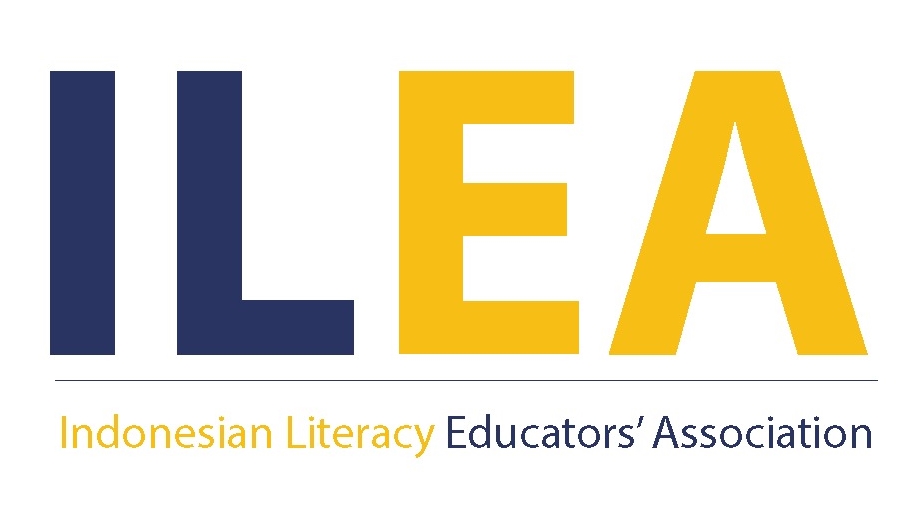Analyzing EFL Learners’ Factors in Affecting English Pronunciation and The Distribution of Pronunciation Rating: A Qualitative Study
Abstract
Pronunciation is the production of speech sounds for communication. It is the most difficult area of English. Pronunciation teaching in English as a Foreign Language (EFL) curriculum has also been ignored for many factors. As a result, numerous EFL learners have often found it challenging to speak freely because of their weak pronunciation. This study deals with the Teaching English as a Foreign Language (TEFL) of speaking skill in EFL Learners of Indonesia. The researcher used qualitative research. There were thirty-five students who filled the questionnaire and ten students read text given First, the researcher looked for the questionnaire and found the questionnaire about Willingness to communicate. Second, the findings of tense were analyzed to know what factors that affect Indonesian learners’ English pronunciation. Third, the findings were shown into tables to know the factors. Then, the researcher asked ten learners to record when they read the text given (reading passage). After that, the researcher analyzed the pronunciation rating based on the trusted rating sheets. Finally, the researcher drew a conclusion based on the findings and discussion. This study is to investigate the factors affecting Indonesian students’ pronunciation and the distribution of pronunciation rating. The study seeks to answer two research questions (RQ): (RQ1) What are the factors affecting Indonesian learners’ English Pronunciation? and (RQ2) What are the distributions of Pronunciation Rating? This study adopted a descriptive qualitative approach which used questionnaire to build this research and reading passage. In conclusion, the researcher elaborated and answered the research questions, and explained the results and discussions about the type of factors that affect EFL learners’ in English pronunciation.
Keywords
Full Text:
PDFReferences
Abadi, C. P. (2015). Developing Speaking Skill in EFL English Course. Journal on English as a Foreign Language, 5(2), 133. https://doi.org/10.23971/jefl.v5i2.373
Abdullah, M. Y., Hussin, S., & Ismail, K. (2019). Implementation of flipped classroom model and its effectiveness on English speaking performance. International Journal of Emerging Technologies in Learning. https://doi.org/10.3991/IJET.V14I09.10348
Andrade, A., Pereira, S., & Tolo, A. (2018). Teaching Speaking by Using Communicative Approach to Second Year Students of Lower Secondary School Oecusse. ISCE: Journal of Innovative Studies on Character and Education, 2(1), 84–92.
Cam, L., & Tran, T. M. T. (2017). An evaluation of using games in teaching English grammar for first year English-majored students at Dong Nai Technology University. International Journal of Learning, Teaching and Educational Research, 16(7), 55–71. Retrieved from https://pdfs.semanticscholar.org/ea44/48f1c6cbb8dab7420abbd20a993a86728206.pdf
Doqaruni, V. R. (2015). Increasing Confidence to Decrease Reticence: A Qualitative Action Research in Second Language Education. The Canadian Journal of Action Research, 16(3), 42–60.
Gilakjani, A. P. (2016). English Pronunciation Instruction: A Literature Review. International Journal of Research in English Education, 1(1), 1–6.
Harmer, J. (2007). The Practice of English Languag Teaching. 394–409.
Hollins, E. R. (2011). Teacher preparation for quality teaching. Journal of Teacher Education. https://doi.org/10.1177/0022487111409415
Hwang, E. (2008). Factors affecting Korean learners’ English pronunciation and comprehensibility. ENGLISH TEACHING (영어교육), 63(4), 3–28.
Ke, I. C., & Cahyani, H. (2014). Learning to become users of English as a Lingua Franca (ELF): How ELF online communication affects Taiwanese learners’ beliefs of English. System. https://doi.org/10.1016/j.system.2014.07.008
Mitchell, K. M., & Clark, A. M. (2018). Five steps to writing more engaging qualitative research. International Journal of Qualitative Methods. https://doi.org/10.1177/1609406918757613
Musthafa, B. (2001). Communicative language teaching in Indonesia issue of theoretical assumption and challenges in the classroom practice. Journal of Southeast Asian Education, 2.
Pramjit, B., & Dhillon, S. (2016). Does Mother Tongue Affect the English Pronunciation? International Journal of Languauge, Education, Humanities, and Innovation.
Quinn Patton, M., & Cochran, M. (2007). A Guide to Using Qualitative Research Methodology. In Medecins Sans Frontieres. Retrieved from http://msf.openrepository.com/msf/handle/10144/84230
Riadil, I. G., Mar’ah, A. K., & Romadhon, F. (2019, September). INSERTS USED BY ARIANA GRANDE OF INTERVIEW IN JIMMY FALLON TALK SHOW. In UNNES International Conference on ELTLT, (pp. 90-99).
Riadil, I. G. (2020). A Study of Students’ Perception: Identifying EFL Learners’ Problems in Speaking Skill. International Journal of Education, Language, and Religion, 2(1), 31–38.
Riadil, I. G. (2020). AN ANALYSIS OF ENGLISH MODALS IN MODAL VERB PHRASE STRUCTURES IN EDUCATIONAL ESSAYS OF ‘SHERRY JOHNSON’AND ‘TAMJID MUJTABA’. Jurnal Pendidikan Bahasa, 9(1), 131–142.
Riadil, I. G. (2020). DOES ORAL PRESENTATION AFFECT THE DEVELOPMENT OF THE STUDENTS’ABILITY TO SPEAK IN EFL CLASSROOM? Social Sciences, Humanities and Education Journal (SHE Journal), 1(2), 13–21.
Riadil, I. G. (2020). Tourism Industry Crisis and its Impacts: Investigating the Indonesian Tourism Employees Perspectives’ in the Pandemic of COVID-19. Jurnal Kepariwisataan: Destinasi, Hospitalitas dan Perjalanan, 4(2), 98–108.
Richards, J. C., & Schmidt, R. (2010). Longman dictionary of language teaching & applied linguistics. In Proceedings of the 21st Asian Pacific Weed Science Society (APWSS) Conference, 2-6 October 2007, Colombo, Sri Lanka. Retrieved from http://images.pcmac.org/Uploads/JeffersonCountySchools/JeffersonCountySchools/Departments/DocumentsSubCategories/Documents/English - Dictionary of Language Teaching and Applied Linguistics.pdf
Sung, C. C. M. (2016). Exposure to multiple accents of English in the English Language Teaching classroom: from second language learners’ perspectives. Innovation in Language Learning and Teaching, 10(3), 190–205. https://doi.org/10.1080/17501229.2014.936869
Zein, M. S. (2017). Elementary English education in Indonesia: Policy developments, current practices, and future prospects: How has Indonesia coped with the demand for teaching English in schools? English Today, 33(1), 53–59. https://doi.org/10.1017/S0266078416000407
DOI: https://doi.org/10.35308/ijelr.v3i1.2377
Refbacks
- There are currently no refbacks.
Copyright (c) 2021 International Journal of Education, Language, and Religion
p-ISSN : 2721-429X
e-ISSN : 2721-4273
Published by Language Center of Universitas Teuku Umar
Website : http://jurnal.utu.ac.id/IJELR
Email : ijelr@utu.ac.id

This work is licensed under a Creative Commons Attribution-ShareAlike 4.0 International License.





1.png)

.png)



1.png)





